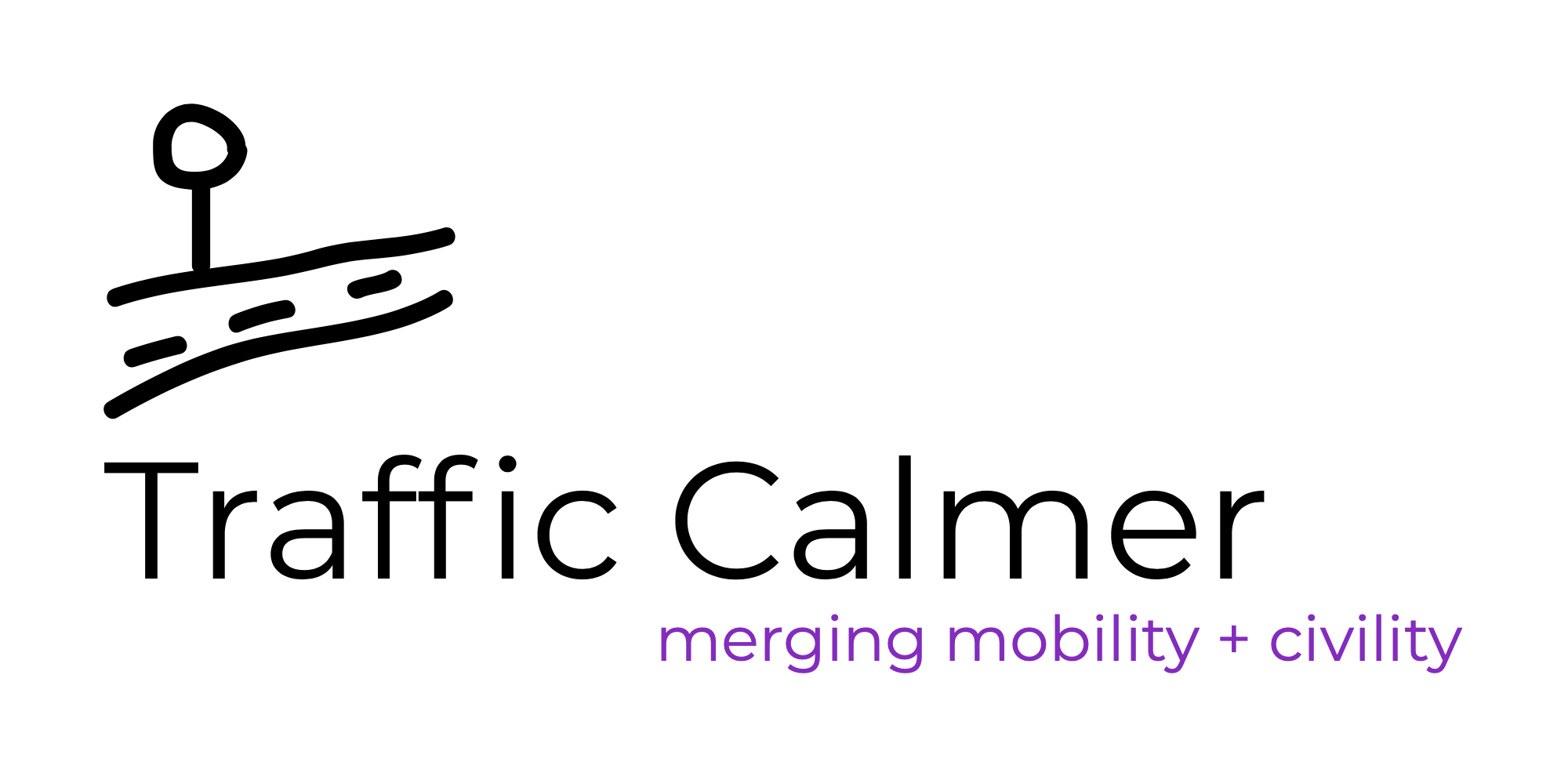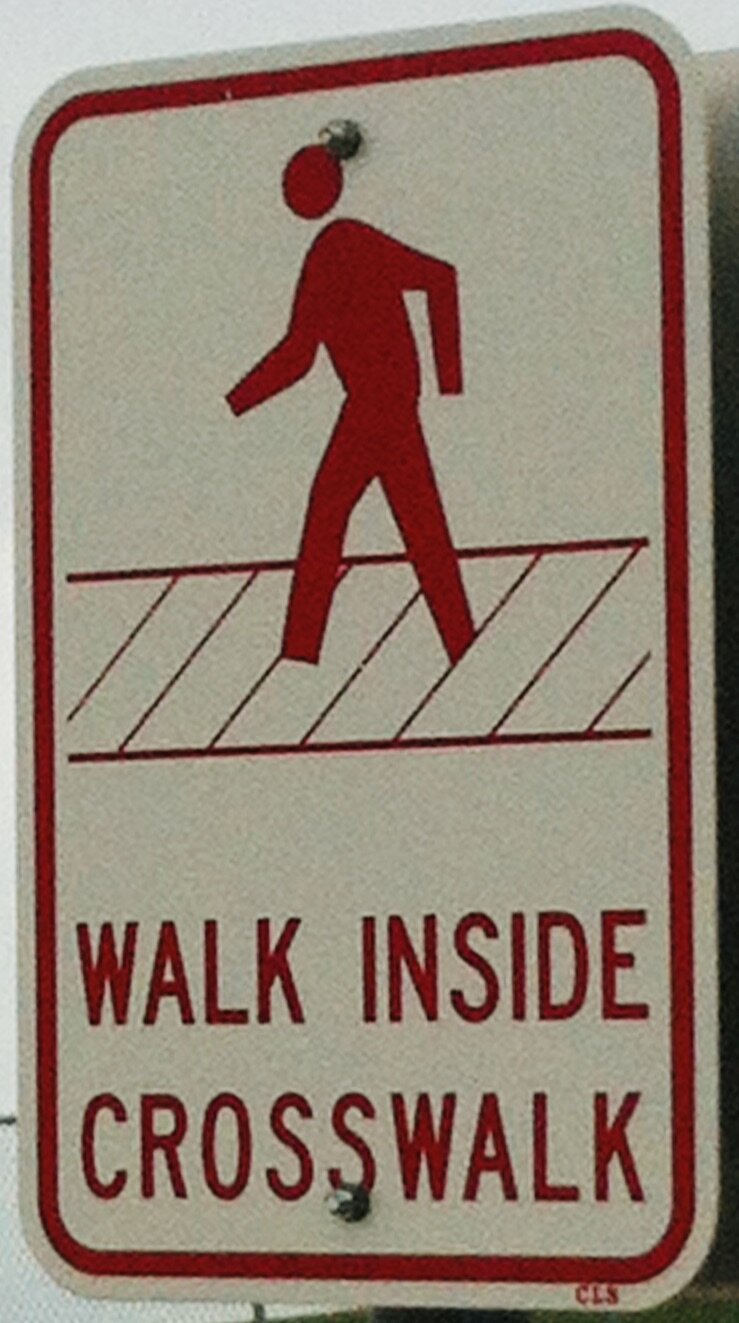Rethinking traffic police
As the United States (and the world) confronts the legacy of slavery and continued racial injustices, this post explores the role of traffic police within our transportation and social systems. I posit that reducing traffic police will increase safety and decrease racial bias.
High collision location in Westerland, Germany
Traffic police exist because of traffic violence
Before we started driving too fast and wrecking our own vehicles, there was little need for a patrol car with a flashing red light, see Policing the Open Road. Until the adoption of “jaywalking” laws, police generally just kept the peace, see Fighting Traffic: The Dawn of the Motor Age in the American City. Today’s society is consumed today by traffic, traffic violence, and traffic police.
A century ago automobile traffic fundamentally altered the use of public space. For eons most people walked or rode in an animal-drawn carriage. Ferries, trains, and streetcars eventually moved people greater distances, but, once they got there, they walked. Bicycles allowed greater speed, but were nimble enough to co-exist with others in the road. The car changed all that.
The introduction of the automobile required three fundamental changes in how society used public space – in particular, streets. First, due to their size, cars could not easily maneuver on crowded streets. So we created travel lanes. Second, cars had to be regulated with regard to speed, turns, access, parking and so forth while others had to be regulated with regard to allowing cars free passage. Third, we needed an enforcement mechanism. Voilà, traffic police.
These three structural changes found their way into a simple triangle called the 3Es: engineering, education, enforcement. Engineers were called upon to (re)design streets for cars. Laws were drawn up and the public “educated” on the new norms of behavior. Police were hired to enforce the above.
Bear in mind that this was a seismic societal shift and traffic police were called on to assist with that shift.
Traffic police are the 3E enforcers
The 3E rubric can be traced to the Kansas City Safety Council, an industry group. A triangle was presented in 1923 with sides labeled engineering, education and enforcement, see Handbook of Traffic Psychology. Similar triangles are still used today.
TXDOT 3E triangle from 2014 with an unfortunate depiction of a person being handcuffed.
The 3E rubric received a big boost from the Automotive Safety Foundation, a trade organization formed in 1937. Education, enforcement, and engineering were credited with lowering the traffic fatality rate; however, the real credit goes to a statistical sleight of hand. The number of deaths related to driving was rising precipitously in the 1920’s and 30’s. Not wanting their product to be seen as unsafe, the automobile industry sought a new metric. They settled on deaths per distance (vehicle miles traveled) which made it seem as if roads were getting safer, see A History of Street Networks: from Grids to Sprawl and Beyond.
Along the way various parties have suggested expanding the 3E’s. The League of American Bicyclists adds encouragement, evaluation, and equity to net six E’s. “How Many E’s in Road Safety” suggests exposure, emergency response, examining for competence, and evaluation for a total of seven Es. Other E words or phrases that might join the alliterative list include early action, economic benefit, effectiveness, efficiency, environment, and ergonomic.
To its credit, @TooleDesign has proposed an entirely different set of E’s: ethics, equity, empathy. These value-driven Es address the fundamental flaw of the original 3E’s - lack of vision.
The 3E rubric was never about traffic safety
If the 3E rubric was ever about safety, it has failed. According to the World Health Organization, traffic deaths neared 40,000 in the US in 2016. This is almost the worst among the 37 Organisation for Economic Co-operation and Development countries. Traffic deaths per capita is higher today (11.2 per 100,000 in 2018) than it was 100 years ago (10.1 per 100,000 in 1918).
Instead of safety, here are three potential ways to describe the 3E rubric:
· Division of labor. Engineers are responsible for designing roads and vehicles. Educators let people know about traffic rules. Enforcers ensure the rules are being followed.
· Cost-benefit. Roads are built to provide access to property and markets. A certain amount of risk is tolerated in exchange for efficient access.
· Individual responsibility (a very American notion). Assuming the roads and vehicles are designed correctly, one just needs to follow the rules.
Seen together, these are linear structures without feedback loops. They are siloed and allow blame to be shifted amongst parties. There is no over-arching vision about what is to be achieved. They are not about safety.
On division of labor, consider this story about traffic police and traffic engineers. There is a 4-lane state highway running through a small Midwestern city. The speed limit was lowered by engineers in an attempt to slow drivers and make the road safer. No other changes were made. Police began to write tickets, which they described to be like catching fish in a barrel. The town judge ordered them not to because all the defendants were claiming entrapment and the tickets voided. The engineers cannot return to the higher speed limit because they would be liable for any crashes. And so it goes: The highway remains unchanged and unsafe.
Manual traffic enforcement is ineffective and ripe for bias
Manual traffic enforcement fails basic tests of effectiveness and equal administration of the law. For a system to be effective, it needs to be repetitive and automatic. “Running Traffic Controls” suggests that “…traditional police enforcement of red lights, stop signs, and other violations is infrequent compared with the number of traffic control devices and frequency of driver violations. Thus, traditional enforcement methods have the distinct disadvantage of generally projecting a low-risk of being detected.” Jaywalking laws are particularly problematic. Study after study has found low correlation with safety but high correlation with bias.
Take for example the events preceding the 2014 death of Michael Brown in Ferguson MO. Brown and Dorian Johnson were walking on Canfield Drive, a quiet, two-lane street in a residential area. It is only 2000 feet long and essentially ends in a parking lot. There are narrow (four foot wide) sidewalks on either side – too narrow for two men to walk side-by-side. So the pair were walking in the street when a police officer drove by and told them to use the sidewalk. Without this “enforcement”, Michael Brown would probably be alive today.
Canfield Drive in Ferguson MO approximately where Michael Brown was killed. Note the narrow sidewalks compared to the wide street. Source: Google Maps
In a previous post I listed a number of incidents of biased enforcement. Police in Tampa targeting black kids on bikes and the like. Journalists have discovered that traffic laws in the US are enforced unevenly. Some claim the very existence of traffic police is racially biased. Traffic police have been placed in a double bind - enforcement open to bias and minimal effectiveness.
Walk inside crosswalk…or else. Benbrook TX
Traffic police restrict free speech
A byproduct of rules meant to facilitate automobile traffic flow is the corresponding restrictions on free speech. The 1925 tome Street Traffic Control quotes a traffic police lieutenant from Cleveland: “…police departments of all cities should start now to make arrests of pedestrians in all cases of flagrant violations. We must certainly begin somewhere to make arrests if we are ever to do our part toward law enforcement as a means of educating the walking public…”. This has morphed into all sorts of traffic codes restricting general behavior – witness the signs below. Many Black Lives Matters protesters have learned they can stand or march on the sidewalk all they want, but the minute they step off the curb they get arrested. The American Civil Liberties Union offers this advice: “If marchers stay on the sidewalks and obey traffic and pedestrian signals, their activity is constitutionally protected even without a permit.” The right to free speech has been subordinated to the rules of the road.
Traffic control or restrictions on free speech and movement? Woodbury NJ
Super specific traffic/social control in Bangor ME
If not traffic police, what?
Many jurisdictions enforce traffic laws electronically through the use of red-light cameras, through traffic calming and through the enactment of policies. Studies show that electronic enforcement is bias-free, efficient, and that recidivism is low. In the 1990’s when traffic calming was taking hold in North America, we referred to speed humps as “sleeping policemen.” No offense to traffic police, but the idea was that these device would manage vehicle speeds much more effectively than the random radar. Traffic calming works because it is self-enforcing. It works day and night without the bias inherent in all human undertakings.
Electronic enforcement
Speed cameras lower speeds and crashes
Red light cameras reduce conflict potential
Bus and bike lane cameras facilitate green mobility
Timed toll booths (if you get to the next toll booth in less time than you should have, you get a ticket) passively moderate speeds
Automated parking enforcement eliminates conflicts with ticket agents
Street design and crash analysis
Speed humps slow speeds
Raised crosswalks prioritize vulnerable users
Raised intersections and mini-roundabouts slow drivers at high conflict locations (intersections)
Leading pedestrian and bicycle intervals give vulnerable users a head start at the signal
Bollards on sidewalk keep drivers in the road
Retractable bollards manage access to “open streets”
Analysis of near misses – aka before the crash
Policies and insurance
Strict liability – driver is assumed at fault in a crash with a cyclist or pedestrian, cyclist is assumed at fault in a crash with a pedestrian
Black boxes in cars, just like in planes and trains
Breathalyzer ignition control
Graduated licenses for drivers under 21
Seizing vehicles of dangerous drivers
Driver monitoring via your phone, for example DriveEasy by GEICO
Shared streets
Above I mentioned individual responsibility. This is how shared streets work. Everyone is responsible for their own actions. One of the reasons why mini-roundabouts have such a stellar safety record is that all users are obligated to yield. It is how one walks collision-free on a sidewalk or in a hallway. Just do not race and pay attention.
Safe Systems (Vision Zero) is the way to go
“A Vision Zero/Safe Systems approach is a reaction to the traditional cost/benefit model of road safety whereby safety interventions for saving lives are weighed against other costs and benefits.” It takes the position that people should not die on the road. It is similar to the airline or train industry. No one in the air travel industry, for instance, expects passengers to die while flying. As a colleague once remarked: the CEO of an airline gets woken up at night when a plane crashes.
The Vision Zero Challenge describes vision zero as “…a holistic safety approach that shifts responsibility from the people using roads to the people designing them, integrating core management and action areas to create a safe mobility system forgiving of human error.” Vision Zero Canada has a terrific primer on the principles.
We need to acknowledge that Safe Systems is NOT some form of re-organized 3E’s, despite what many VZ programs in the US have tried to re-brand. As shown above, the 3E’s are about industry promotion, not traffic safety. It was borne in a time when people feared for their lives from the newfangled automobile. We are still dying today.
From enforcement to safety
The advent of the automobile required seismic spatial shifts in streets and public thoroughfares. The automobile industry invented the 3E rubric to implement that shift, under the (false/failed) cover of safety. Traffic police were enlisted as enforcers. Traffic rules deleteriously affect free speech. Manual enforcement is ineffective and biased. Automatic enforcement designed to increase safety, not punish offenders, is effective and unbiased. Safe Systems is the future.
Comparison of old (3E) and new (Safe Systems) thinking







